Our proposed student research projects, as presented in today’s project market, are online. Click the image to see all the proposed projects:
Two NERDS summer papers: Streetonomics and COVID Twitter psychology
Prolific NERDS researcher Luca Maria Aiello published 2 more papers over the summer. They already received wide media coverage:
- Streetonomics: Quantifying culture using street names, by M. Bancilhon, M. Constantinides , E.P. Bogucka, L.M. Aiello, D. Quercia, published in PLOS ONE
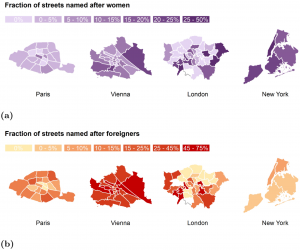
This paper studies the names of 4,932 honorific streets in the cities of Paris, Vienna, London and New York, finding that street names greatly reflect the extent to which a society is gender biased, which professions are considered elite ones, and the extent to which a city is influenced by the rest of the world, quantifying a society’s value system.
The paper was covered in media here:
https://www.bbc.com/future/article/20210712-streetonomics-what-our-addresses-say-about-us
https://www.fastcompany.com/90652762/how-streets-in-new-york-london-paris-and-vienna-got-their-names-according-to-streetonomics
https://www.thetimes.co.uk/article/street-names-show-why-great-cities-are-worlds-apart-x06lbdwgj
https://elpais.com/ciencia/2021-06-30/el-machismo-esta-en-las-calles.html
https://www.lefigaro.fr/sciences/l-ame-d-une-ville-peut-elle-se-lire-dans-les-noms-de-ses-rues-20210701 - How epidemic psychology works on Twitter: evolution of responses to the COVID-19 pandemic in the U.S., by L.M. Aiello, D. Quercia, K. Zhou, M. Constantinides, S. Šćepanović, S. Joglekar, published in Humanities and Social Sciences Communications
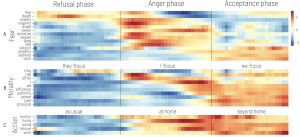
The paper studies the use of language of 122M tweets related to the COVID-19 pandemic posted in the U.S. during the whole year of 2020. On Twitter, we identified three distinct phases. Each of them is characterized by different regimes of the three psycho-social epidemics.
See also: https://www.fastcompany.com/90659372/pandemic-emotions-research-twitter
Release of GrowBike.Net to explore growing urban bicycle networks
Recently we released GrowBike.Net, accompanying our preprint “Growing Urban Bicycle Networks“. The interactive data visualization platform was developed by NERDS Master students Cecilia Laura Kolding Andersen and Morten Lynghede as part of their thesis “Developing an Interactive Visualization of Bicycle Network Growth” with Michael Szell.
GrowBike.Net lets you explore how to grow bicycle networks from scratch in 62 cities worldwide. Choose a city and grow the bike network, connecting places efficiently step by step.
The growth process creates a cohesive bicycle network – something that every modern city should have. Studying these synthetic networks informs us about the geometric limitations of urban bicycle network growth and can lead to better designed bicycle infrastructure in cities. GrowBike.Net also allows to compare the grown networks with your city’s existing bicycle network.
Although our approach here is not yet aiming to provide concrete urban design solutions, it could be useful for planning purposes for easily generating an initial vision of a cohesive bicycle network – to be re-fined subsequently.
The platform also features a media page where over 1000 videos and plots can be downloaded: http://growbike.net/download
Have fun exploring growing bike networks in your city!
Prominent media coverage of our Nature paper
Our recently published, NERDS-involved Nature paper “The universal visitation law of human mobility” has received some prominent, international media coverage in the last month. Here a selection of news articles that explain the paper’s findings and implications:

Une loi universelle régit la fréquentation des villes
 Die Vorhersagbarkeit menschlicher Bewegungsmuster
Die Vorhersagbarkeit menschlicher Bewegungsmuster

Das Universalgesetz der Straße
 Door gegevens van mobiele telefoons weten we nu: stedelingen reizen niet vaak naar andere stadsdelen
Door gegevens van mobiele telefoons weten we nu: stedelingen reizen niet vaak naar andere stadsdelen
 Há um padrão universal na forma como as pessoas viajam nas cidades
Há um padrão universal na forma como as pessoas viajam nas cidades
 Universelles Muster menschlicher Mobilität entdeckt
Universelles Muster menschlicher Mobilität entdeckt
NERDS at ICWSM-2021
NERDS are currently active at this year’s International AAAI Conference on Web and Social Media (ICWSM): https://www.icwsm.org/2021/index.html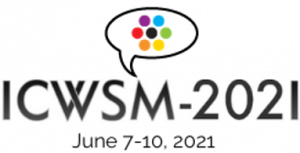 The International AAAI Conference on Web and Social Media (ICWSM) is a forum for researchers from multiple disciplines to come together to share knowledge, discuss ideas, exchange information, and learn about cutting-edge research in diverse fields with the common theme of online social media. This overall theme includes research in new perspectives in social theories, as well as computational algorithms for analyzing social media. ICWSM is a singularly fitting venue for research that blends social science and computational approaches to answer important and challenging questions about human social behavior through social media while advancing computational tools for vast and unstructured data.
The International AAAI Conference on Web and Social Media (ICWSM) is a forum for researchers from multiple disciplines to come together to share knowledge, discuss ideas, exchange information, and learn about cutting-edge research in diverse fields with the common theme of online social media. This overall theme includes research in new perspectives in social theories, as well as computational algorithms for analyzing social media. ICWSM is a singularly fitting venue for research that blends social science and computational approaches to answer important and challenging questions about human social behavior through social media while advancing computational tools for vast and unstructured data.
As usual, Luca Maria Aiello fulfils his role as Senior PC member at ICWSM. Further, we published two new papers at the event:
- The Healthy States of America: Creating a Health Taxonomy with Social Media, by S. Šćepanović, L.M. Aiello, K. Zhou, S. Joglekar, and D. Quercia

Since the uptake of social media, researchers have mined online discussions to track the outbreak and evolution of specific diseases or chronic conditions such as influenza or depression. Here we developed a Deep Learning tool for Natural Language Processing that extracts mentions of virtually any medical condition or disease from unstructured social media text. We applied it to Reddit and Twitter posts, analyzed the clusters of the two resulting co-occurrence networks of conditions, and discovered that they correspond to well-defined categories of medical conditions. This resulted in the creation of the first comprehensive taxonomy of medical conditions automatically derived from online discussions, which strikingly resembles the official International Statistical Classification of Diseases and Related Health Problems (ICD-11). - Multilayer Graph Association Rules for Link Prediction, by M. Coscia and M. Szell

Here we investigate the multilayer link prediction problem with graph association rules: Will two nodes connect, and of which type?
Four new NERDS papers in May 2021
This month we have published four new papers, in Nature, Sustainability, IEEE Computer Graphics and Applications, and ACM Computing Surveys:
- The universal visitation law of human mobility, by M. Schläpfer, L. Dong, K. O’Keeffe, P. Santi, M. Szell, H. Salat, S. Anklesaria, M. Vazifeh, C. Ratti, G.B. West, published in Nature
More info at the accompanying interactive website: https://senseable.mit.edu/wanderlust/
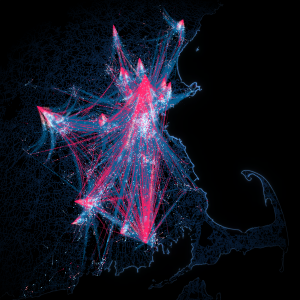
This paper reveals a simple and robust scaling law that captures the temporal and spatial spectrum of population movement on the basis of large-scale mobility data from diverse cities around the globe.
- Implementing Gehl’s Theory to Study Urban Space. The Case of Monotowns, by D. Cerrone, J. López Baeza, P. Lehtovuori, D. Quercia, R. Schifanella, and L.M. Aiello, published in Sustainability
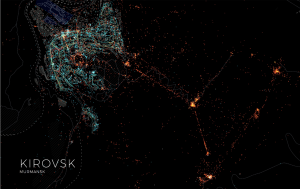
The paper presents a method to operationalize Jan Gehl’s questions for public space into metrics to map Russian monotowns’ urban life in 2017. With the use of social media data, it becomes possible to scale Gehl’s approach from the survey of small urban areas to the analysis of entire cities while maintaining the human scale’s resolution. - The Dreamcatcher: Interactive Storytelling of Dreams, by E.P. Bogucka, B.A. Aseniero, L.M. Aiello, D. Quercia, published in IEEE Computer Graphics and Applications
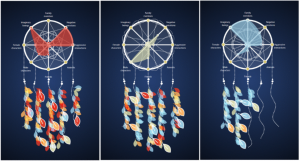
Here we designed “The Dreamcatcher,” an interactive visual tool that explores the link between dreams and waking life through a collection of dream reports. We conducted a user study with 154 participants and found a 25% increase in the number of people believing that dream analysis can improve our daily lives after interacting with our tool. The visualization informed people about the potential of the continuity hypothesis to a surprising extent, to the point that it increased their concerns about sharing their own dream reports, thus opening new questions on how to design privacy-aware tools for dream collection. - Community Detection in Multiplex Networks, by M. Magnani, O. Hanteer, R. Interdonato, L. Rossi, A. Tagarelli, published in ACM Computing Surveys
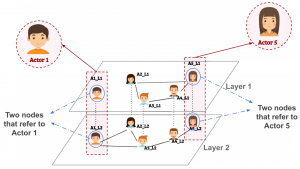
Here we provide a taxonomy of community detection algorithms in multiplex networks. We characterize the different algorithms based on various properties and we discuss the type of communities detected by each method. We then provide an extensive experimental evaluation of the reviewed methods to answer three main questions: to what extent the evaluated methods are able to detect ground-truth communities, to what extent different methods produce similar community structures, and to what extent the evaluated methods are scalable. Besides offering a much needed overview of the methods and assumptions of CD in multiplex networks the paper attempts to provide few guiding principles for the choice of a community detection approach to multiplex data.
Postdoc wanted on Science of Science and Algorithmic fairness
We are looking for a postdoc in data/network science, to start in fall 2021: Read more and apply at the official call page
The postdoc will work in the NEtwoRks, Data, and Society (NERDS) group at IT University of Copenhagen with Roberta Sinatra on the topic of Science of Science and Algorithmic fairness. The group currently focuses on quantitative projects at the boundary of computational social science and network science, including science of science, social dynamics, urban sustainability, data visualization, and fundamental questions in complex systems.

The postdoc position is part of a large project aimed to uncover the bias mechanisms that drive scientific impact, and to use them to create fair algorithms. The project will involve the analysis of large-scale datasets, running controlled experiments, and modelling social dynamics in science. Our priority is to attract technically strong researchers who are interested in asking bold, new questions with data. The team executing the project is composed of the PI, two postdocs, and one PhD student.
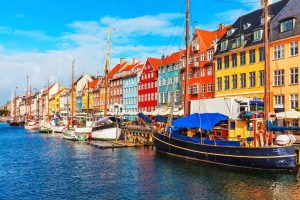 The position is in the NERDS group in the Computer Science Department. Both salary and working conditions are excellent. The group is a down-to-earth and fun place to be. Copenhagen is often named as the best city in the world to live in, and for good reasons. It’s world-renowned for food, beer, art, music, architecture, the Scandinavian “hygge”, and much more. In Denmark, parental leave is generous, and child-care is excellent and cheap.
The position is in the NERDS group in the Computer Science Department. Both salary and working conditions are excellent. The group is a down-to-earth and fun place to be. Copenhagen is often named as the best city in the world to live in, and for good reasons. It’s world-renowned for food, beer, art, music, architecture, the Scandinavian “hygge”, and much more. In Denmark, parental leave is generous, and child-care is excellent and cheap.
The position is a full-time position, funded for 24 months. See more details and apply in the official call. If you are interested feel free to reach out to Roberta Sinatra at rsin@itu.dk.
New Paper on Sampling Social Media + Call for Abstract @ Networks21 Satellite
NERDS member Michele Coscia is having a busy March!
He published a new paper in the TKDD journal titled “Noise Corrected Sampling of Online Social Networks“. The paper focuses on a new way to perform topological network sampling, i.e. to explore a network by following its edges such that the explored (sub)network is as similar as possible to the whole structure. In this paper, the method uses a Bayesian framework to estimate the amount of novel information a new connection brings about into the currently explored sample.
He is also organizing a satellite for the Networks21 conference. The satellite is titled “Complex Networks in Economics and Innovation”. The organizers are looking for contributed abstracts on network applications on research about economic development and innovation. Read more on the official website, or submit your abstract to the submission site.
Bojan Kostic has joined NERDS
We are thrilled to welcome Bojan Kostic to our research group!

Bojan joins us as Postdoc. He previously worked at the Technical University of Denmark (DTU), in the Machine Learning for Smart Mobility group (MLSM), on the application of Data Science and Machine Learning in transport and mobility.
At NERDS he will be applying his skills in traffic data analytics and video processing using machine learning and computer vision, to deepen our understanding of interlinked human behavior in urban traffic.
NERDS paper out: How unique is your app fingerprint?
We have a new exciting paper out: Temporal and cultural limits of privacy in smartphone app usage by Vedran Sekara et al. published in Nature Scientific Reports, asking:
 The paper looks into which apps people use and creates app-fingerprints for 3.5 million individuals. Similar to forensic science where you need 12 points to distinguish between fingerprints we ask how many apps do we need to distinguish between two users? We find people’s smartphone app behavior is very unique and 3 apps are enough to identify more than 90% of all individuals. But app-fingerprints change over time and are different between countries. We find that people have more unique app-fingerprints during summer because we use more unique apps, and Americans have the most unique fingerprints (need the fewest apps to identify them) while Finns are the least unique (need more apps to identify their fingerprint). Why is this important? Because the work highlights problems with current policies intended to protect user privacy and emphasizes that policies cannot directly be ported between countries.
The paper looks into which apps people use and creates app-fingerprints for 3.5 million individuals. Similar to forensic science where you need 12 points to distinguish between fingerprints we ask how many apps do we need to distinguish between two users? We find people’s smartphone app behavior is very unique and 3 apps are enough to identify more than 90% of all individuals. But app-fingerprints change over time and are different between countries. We find that people have more unique app-fingerprints during summer because we use more unique apps, and Americans have the most unique fingerprints (need the fewest apps to identify them) while Finns are the least unique (need more apps to identify their fingerprint). Why is this important? Because the work highlights problems with current policies intended to protect user privacy and emphasizes that policies cannot directly be ported between countries.


